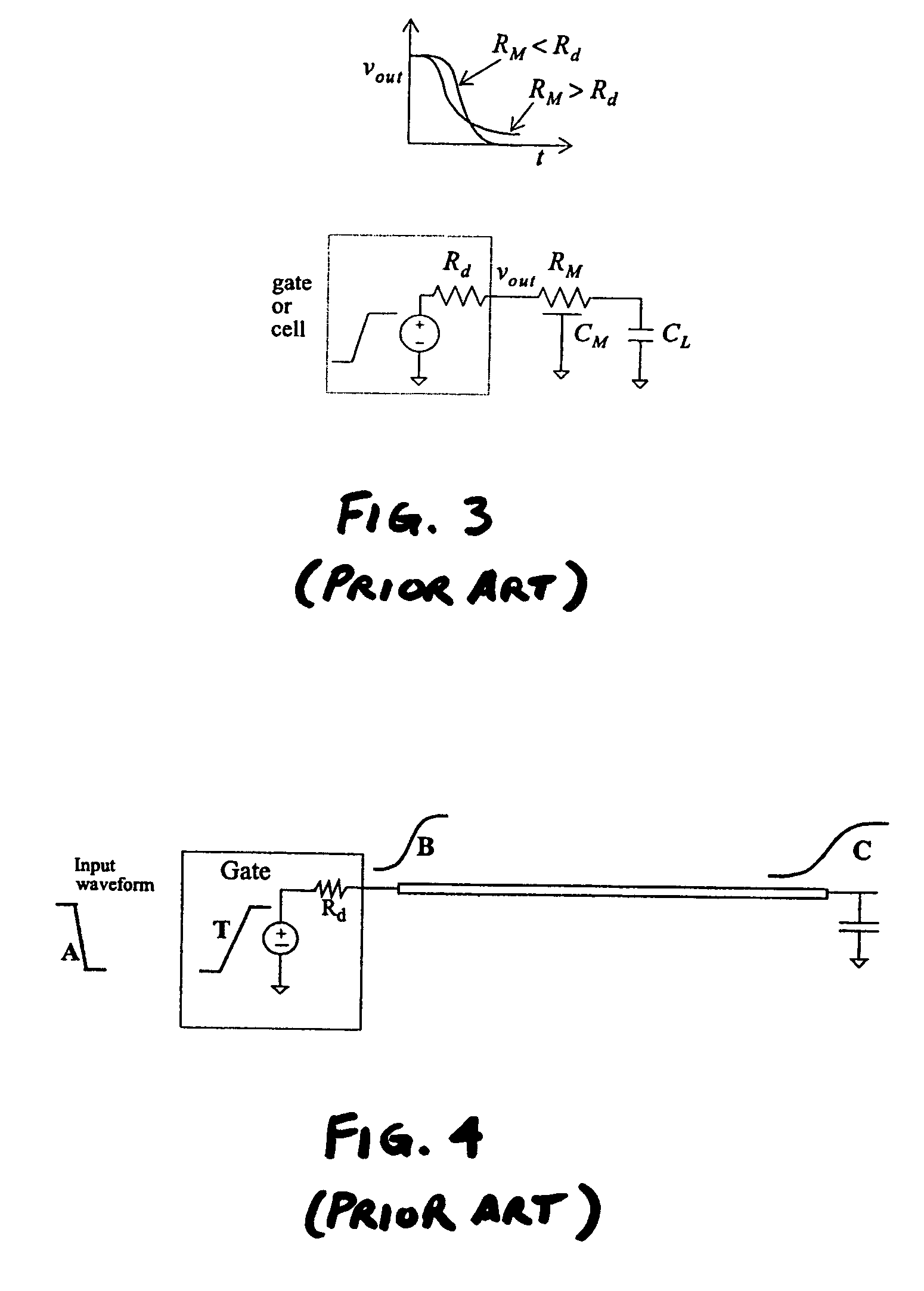Modeling interconnected propagation delay for an integrated circuit design
a propagation delay and integrated circuit technology, applied in the field of circuit modeling, can solve the problems of increasing the complexity of delay calculation, calculating a single linear resistor, and unable to model gate loads by purely capacitive loads for high-performance digital circuits
- Summary
- Abstract
- Description
- Claims
- Application Information
AI Technical Summary
Benefits of technology
Problems solved by technology
Method used
Image
Examples
Embodiment Construction
[0037]The Figures (“FIG.”) and the following description relate to preferred embodiments of the present invention by way of illustration only. It should be noted that from the following discussion, alternative embodiments of the structures and methods disclosed herein will be readily recognized as viable alternatives that may be employed without departing from the principles of the claimed invention.
Current Source for Pure Capacitance Load
[0038]Referring now to FIG. 5, a logic stage 505 includes a driver gate 520 and driven logic inputs C 532 and D 562 and interconnects 540, 545 (note that interconnects may comprise one wire or multiple wires) between them in accordance with the present invention. The drive logic stage 505 drives subsequent logic elements in subsequent logic stages. The present invention includes a system and method for determining timing (or signal propagation delay) between an input of the drive logic stage 505 and an input of each logic element in subsequent logi...
PUM
 Login to View More
Login to View More Abstract
Description
Claims
Application Information
 Login to View More
Login to View More - R&D
- Intellectual Property
- Life Sciences
- Materials
- Tech Scout
- Unparalleled Data Quality
- Higher Quality Content
- 60% Fewer Hallucinations
Browse by: Latest US Patents, China's latest patents, Technical Efficacy Thesaurus, Application Domain, Technology Topic, Popular Technical Reports.
© 2025 PatSnap. All rights reserved.Legal|Privacy policy|Modern Slavery Act Transparency Statement|Sitemap|About US| Contact US: help@patsnap.com



